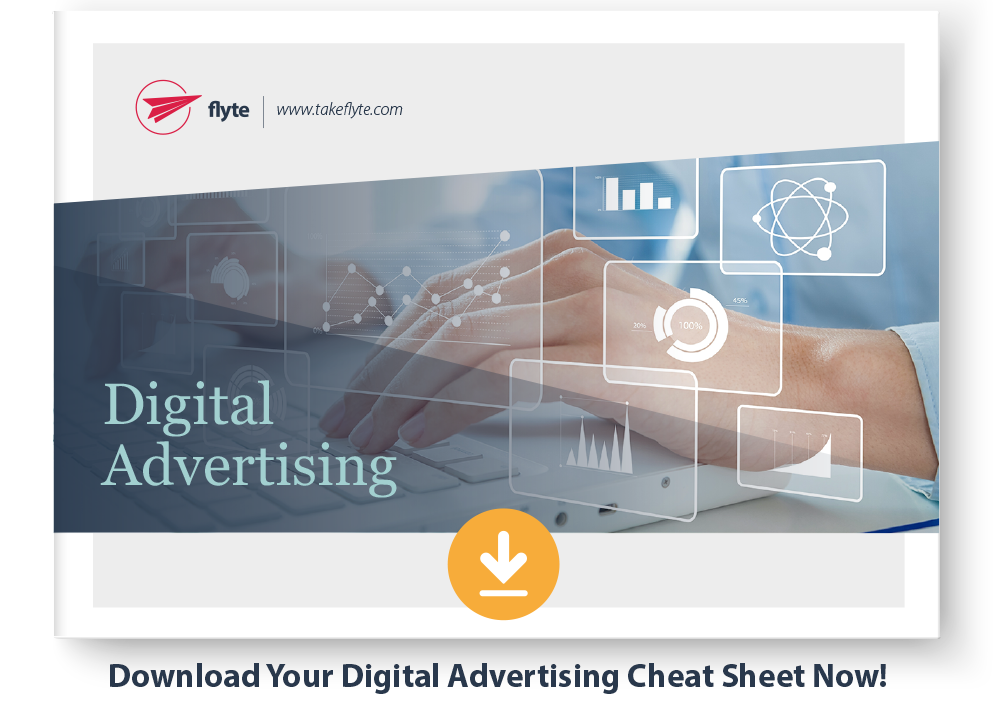 Should you advertise online? And if so, where? Should you invest in paid search, paid social, or find other advertising and sponsorship opportunities? In this article, we’ll look at some of the more popular and more niche advertising opportunities out there to put you in front of your ideal customer, as well as how much you should budget and which platforms are right for you.
Should you advertise online? And if so, where? Should you invest in paid search, paid social, or find other advertising and sponsorship opportunities? In this article, we’ll look at some of the more popular and more niche advertising opportunities out there to put you in front of your ideal customer, as well as how much you should budget and which platforms are right for you.
Why Is Digital Advertising Important in 2022?
As newsfeeds become more congested, inboxes overflow, and the first page of Google gets more competitive, we need to find new ways to reach and engage our prospects. Although created, curated, and earned media still work, sometimes you need paid ads to break through to a new audience, or repetition of your message for it to sink in.

Whenever you’re looking at online advertising options, you need to consider your customer’s journey. Is she going to search Google for a product or solution? Will he ask friends for references on social media? Do they visit popular discussion sites for more information? Or do they visit niche industry sites?
Understanding where your customer’s journey leads her helps you determine where to best spend your advertising dollar. Below are a number of options for you to choose from.
Should You Outsource Your Digital Advertising?
Before we jump into the how, where, and why of online ads, you may be wondering if you can (or should) run ads in-house, or work with an outside agency that specializes in online advertisements.
There are pros and cons to each approach, so ultimately the decision may come down to your personal level of comfort with technology, the time you can dedicate to mastering different platforms, and your marketing and advertising budget.
Benefits to Keeping Your Advertising In-House
The best thing about running your ads in-house is the cost.
Many outside agencies require you to have a minimum monthly spend, and that’s on top of their management fee.
In addition to upfront cost savings, only you know the inner workings of your business and the seasonal cycles that can drive your ad spend up or down. If something happens in your business you can quickly pivot and pause and ad or double-down on a new opportunity.
Plus, all of these digital ad platforms have been set up so that anyone can run ads, so why pay more to entrust it to an outside agency?
Benefits to Hiring a Consultant to Run Your Online Ads
While it’s true that anyone can run ads, it’s also true that your competitors may have brought in outside expertise to run their ads. That means that while you’re still learning the ropes, you’re going up against the Serena Williamses, the Gordon Ramsays, and the Kevin O’Learys of the world.
To really compete in online advertising, you may need to dedicate a full-time position (or several) to staying on top of all the algorithm updates, privacy changes, and new ad formats these platforms are constantly rolling out. Is the cost of one-full time employee more than the management fees of an outside agency?
The cost of management fees are often offset by the savings you’ll see in a well-run ad campaign, driving more traffic for the same ad budget or lowering your cost per acquisition (COA), or both.
If you are going to try and run these ads yourself, just ask yourself if this is the best use of your time and resources? What are you not able to do if you manage your own ads?
Benefits to a Hybrid Model
A third option is to hire an outside firm to audit your current advertising and to optimize how you advertise on these platforms. It’s often the case that the heavy lifting takes place in the first three to six months, and then the workload subsides.
We have many clients who have brought us in for an audit, or had us run their ads for the first six months, and then handed off the reins to an in-house marketing person. Most of these clients engage us for a quarterly or even monthly review, just to make sure they’re still on target.
Ultimately, you’ll need to make a decision that best serves your business.
Paid Search (aka Pay-Per-Click or PPC)
When your customer’s journey takes her to the search engines for more information, more research, or more advice, that’s when you should invest in paid search ads.
Search engines allow you to place your ad at the top of the search results page, in the local map results, show shopping ads, and at partner sites across the web.
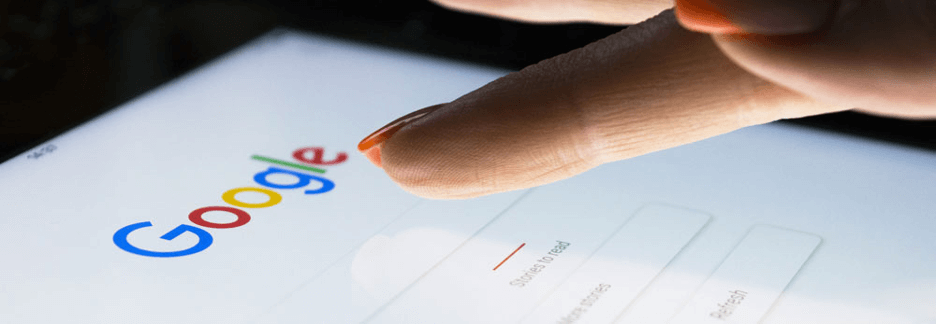
While some people run search ads for brand awareness, most often the purpose of search ads is to drive traffic to a specific page once someone has shown commercial intent. To that end, you don’t want to send people to your home page. Instead, it’s important to create high-converting landing pages that move people down the sales funnel.
If you’re running ads for e-commerce, you should drive people right to the product they were searching for rather than the home page or category page. You’ll find that you’ll get a much better conversion rate and lower your cost per acquisition.
Google Ads
This is where most businesses start–and finish–their search advertising. With Google commanding so much of search traffic, that makes sense.
Who it’s for: Most businesses can (and perhaps should) be advertising on Google. As in most online advertising platforms these days, there are restrictions on certain verticals.
If you do a search on some of your most prized keywords and you see ads at the top of the page, that’s a strong indicator that you need to be running Google Ads.

How it works: Google Ads is comprised of two networks: the Search Network and the Display Network. The Search Network consists of Google’s search results pages, other Google sites like Shopping and Maps, and search sites that partner with Google. The Display Network consists of sites like YouTube, Blogger, Gmail, and thousands of partnering sites across the internet.
Google offers seven different kinds of campaigns:
- Search: Traditional text ads displayed on Google’s results page.
- Display: Ads that feature images shown on different web pages within Google’s Display Network.
- Video: 6-15 second pre-roll videos that appear before YouTube videos play.
- Shopping: For retailers promoting online and local inventory. Google will connect to your eCommerce Store via Google Merchant Center
- App: Allow you to advertise your app across Google’s different properties.
- Smart: Automated Google-generated campaigns
How much you should budget: Like almost every ad platform here, the right answer is “it depends.”
Your Google Ads budget will depend on several factors such as your industry, location, and what you’re able to spend.
While you can run Google Ads in-house for just a few dollars a day, most agencies require a minimum spend of 1K – 1.5K/mo. Many SMBs have budgets ten times that amount, and national companies may 100x it.
If your desired budget is $500/month ($16/day) and your desired keywords all cost $10+ per-click, you know that you can only be receiving a maximum of about one click per day.
The most important factor is the ROI (return on investment) on your Google Ad spend, and whether you can keep up with the demand Google Ads can create.
A good way to determine your budget is to create a Google Ads account, and use their Keyword Research feature. This allows you to type in your location and desired keywords, and view a rough estimate of how many people are searching for that keyword, what the level of competition is for using those keywords, and what the cost-per-click is for those keywords.
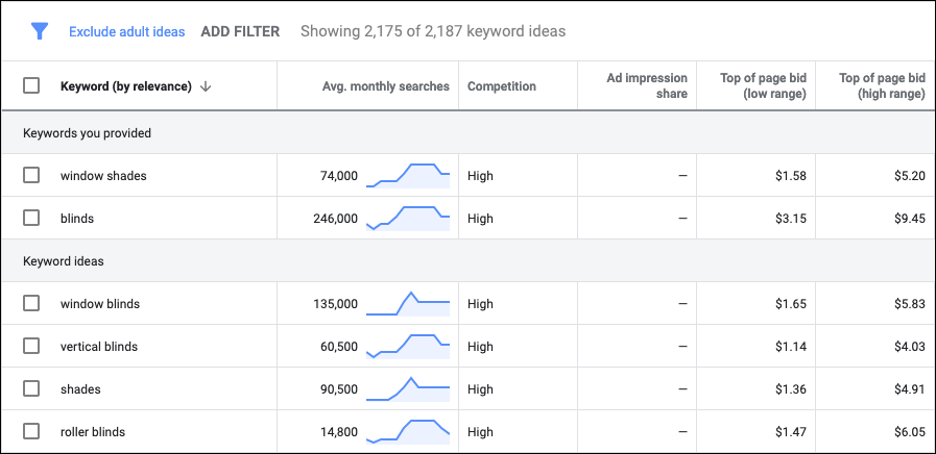
Best practices:
- Check your account regularly, as Google Ads are definitely not the place for “set it and forget it” advertising.
- Stay up-to-date on Google’s new features/changes within the platform by regularly reading Google’s own resources as well as following industry experts.
- View your search terms report regularly and add irrelevant searches to your negative keyword list.
- Use location targeting to zero in on your desired audience.
- Never use your homepage as a landing page for your ads.
- Utilize ad extensions to ensure your ads provide as much helpful information as possible, while taking up as much space as possible.
- Set up conversions that track meaningful data like purchases or form fills, and avoid tracking less important information like website page views, scrolls, etc.
- Make sure conversions are set up properly–this is arguably one of the most important aspects of your account, as it is how you measure your true ROI.
Further reading:
- Learning Google Ads: 11 Terms You Should Know Before Creating A Google Ads Account
- Do Google Ads Really Work for Small Business?
- Google Ads [Official]
Microsoft Advertising (formerly Bing Ads)
Most search advertisers ignore Bing, but that may be a costly mistake. Just because Bing doesn’t have as many users doesn't mean there isn’t opportunity here. Just one more qualified lead a day, a week, or even a month could mean success for your business.
In fact, we’ve seen some of our clients get better clickthrough rates with lower ad spends on Bing than on Google!
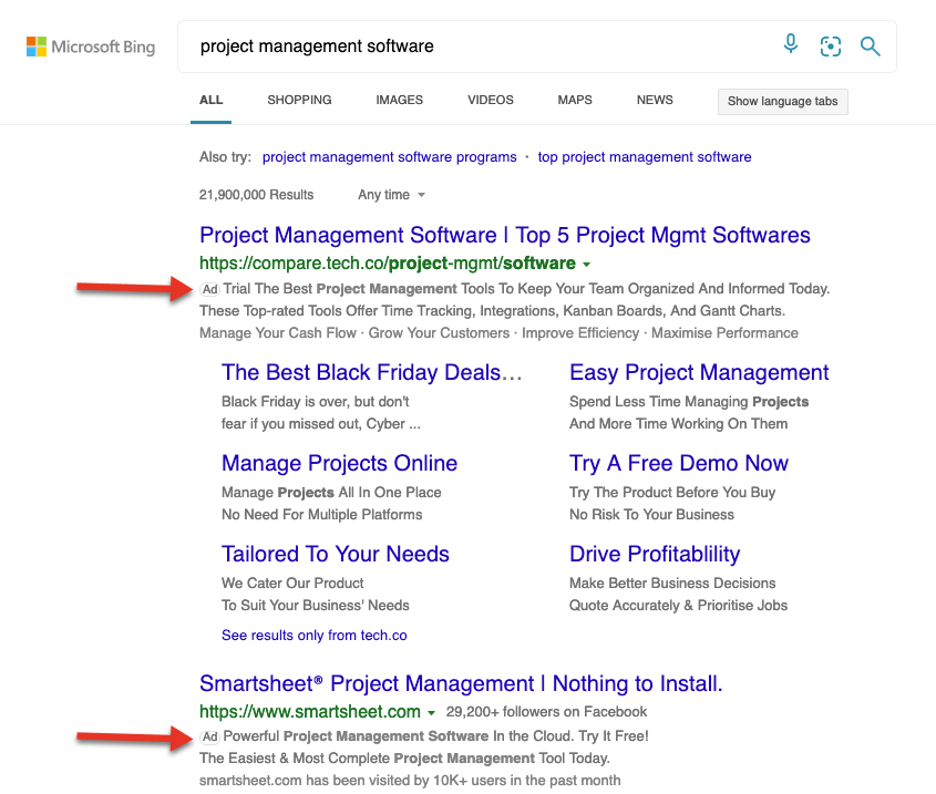
Who it’s for: Similar to Google, most businesses are welcome to advertise on Bing.
There’s also a theory that some of Bing’s user base don’t realize they can change their default browser, so if your audience is less sophisticated with technology, you might find more success here as well.
How it works: Bing was designed so that advertisers already using Google Ads could easily import their existing campaigns into Bing’s platform. Both are pay-per-click platforms with almost identical functionality and ad setup. However, there are a few key differences between the two to keep in mind.
While Google consists of the Search and Display networks, Bing is owned by Microsoft who also owns Yahoo and AOL. This means that advertisers using Bing will also have the opportunity to have their ads viewed on all three search engines, as well as Bing’s partner sites.
While Bing doesn’t offer as many campaign types as Google, the campaigns they do offer are almost identical to their Google counterparts:
- Search Ads
- Shopping Ads
- Dynamic Search Ads
How much you should budget: Again, it depends and will likely be driven by the same factors as your Google Ads spend. Consider optimizing your Google Ads spend first, then bringing that approach (and part of your search budget) over to Bing.
Best practices: Nearly identical to the best practices for Google Ads.
In addition, since Microsoft has made it easy to import your Google Ads into Bing, it probably makes sense to optimize your Google Ads first, then expand into Bing unless you have a compelling reason to start with Bing. (You don’t.)
Further reading:
Social Media Advertising
People don’t visit Facebook to learn about your accounting services or research table saws. They don’t scroll through Instagram to explore ways to save for college or compare hydroponic gardening systems.
However, if you put the right message in front of the right person at the right moment, magic happens. They click on your link, visit your landing page, and move down your funnel.

Social media platforms can help you in this regard, as they have captured a compelling/frightening amount of information about us based on our online activity, our location, or devices, and other online–and even offline–behavior.
Despite increased privacy settings, these social media sites have a good sense of what type of ads we’re likely to engage with and click on.
“Audiences” is a critical concept in social ads. Beyond targeting people based on demographics, interests, or behavior, you can create and target specific audiences. Some important ones include:
- Website audiences – people who have visited your website. You generally need to install a “pixel” from a specific social media platform so that the platform knows which of their members have visited your site.
- Custom audiences – this could be your email subscribers, people in your database, basically any group of people for whom you have email addresses. You can upload these email addresses to Facebook or Twitter, and assuming they use the same email address for that social media platform, you can target them for advertising.
- Lookalike audiences – most social media platforms can create a group of people similar to an audience you’ve already created. In other words, you can upload your email list and ask Facebook or Reddit to find other members who are like the people you’ve already uploaded. (Pro tip: it’s still important to use filters for lookalike audiences. Facebook may find people similar to your website visitors who live in Texas, but if you only deliver pizza in Portland, ME, advertising there won’t likely help.)
Social is great for retargeting people–showing ads to people who have visited your website, signed up for your newsletter, and so on–but didn’t make a buying decision.
To enable retargeting, you’ll need to install a “pixel” on your website for each social platform where you want to run retargeting ads.
Beyond retargeting, the pixel will also allow you to measure your advertising ROI and your COA (cost per acquisition.) Reviewing conversion data and split A/B testing will allow you to make better budgeting decisions.
Like search ads, social ads that drive traffic to a website should include a customized landing page that continues the message that started with the ad. In other words, create customized landing pages for your social ad campaigns meant to drive traffic, and run a/b split tests on landing pages to continually improve your conversion rates.
Unlike search ads, many social ad campaigns are for brand awareness and building an audience on the social platform in question. That means that it’s a good idea to develop a robust profile and consistently publish organic content if brand building and engagement are your campaign goals.
Here’s a platform by platform breakdown of how you can put your message in front of your ideal customer.
Facebook Advertising
Facebook has the most robust targeting of any social media platform. You can advertise to people by age, interests, behavior, and location.
You also know that your audience is likely on Facebook, as 80% of internet users have a Facebook account.
That doesn’t necessarily mean they want to hear about your B2B offering when they’re trying to catch up on what little Timmy is up to, but it can help you identify people who have an interest in what you’re selling.
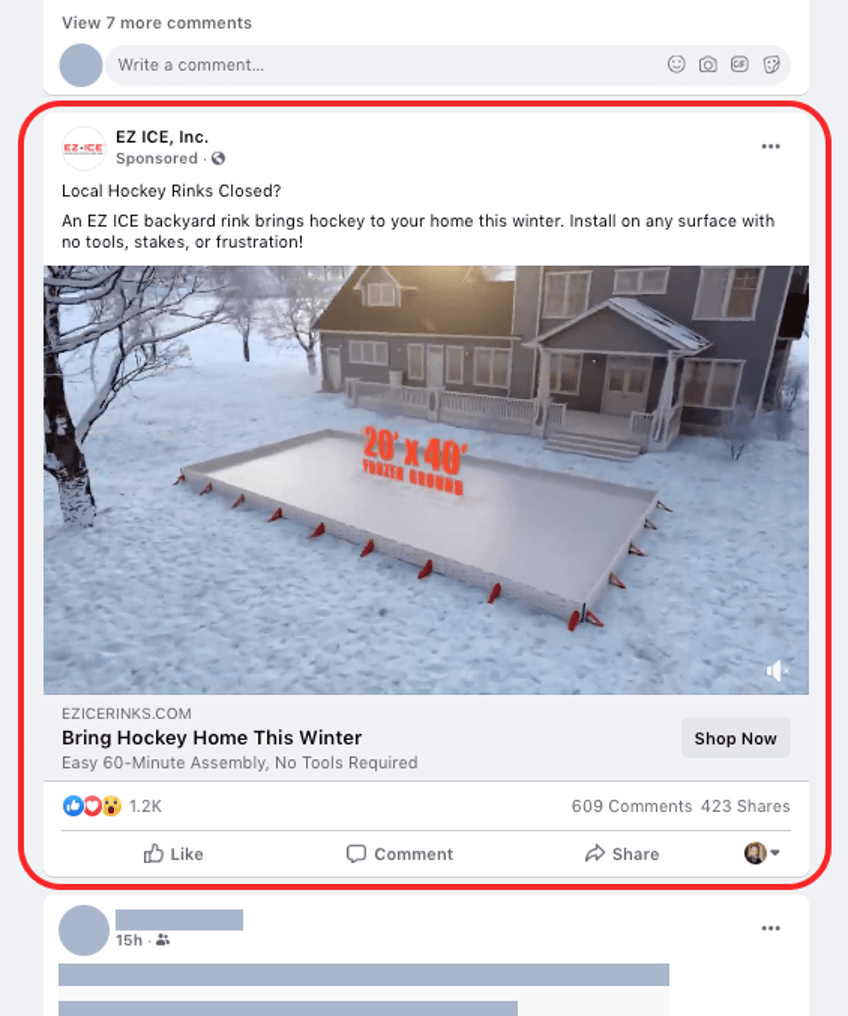
Who it’s for: Any business that wants to get its message in front of a targeted audience who are most likely to engage with your product or service.

How it works: Like most social media platforms, Facebook Ads is an auction where you bid to show ads to your ideal prospects. The process for running ads here is found on all the other social channels we’ll look at:
- Determine your objectives
- Develop your creative (ads)
- Target your audiences
- Set your budgets, and
- Measure your results
You can run a wide variety of different ad types, include image ads, video ads, Messenger ads, and more. Start with the ones most likely to work for your business, but experiment with other types of ads over time.
How much you should budget: Facebook Ads have the lowest cost per 1,000 impressions compared to other platforms. Evaluating your value of conversions, for example, a newsletter signup may have a different budget than promoting a sale. Ideally, $1,000 can help you build an initial ad test (A/B split testing) so you can begin optimizing your messaging and delivery.
Determining your Cost Per Lead, the Price of Your Product and the Lifetime Value of a customer will help determine the best budget for your business. Facebook Ads not only drive engagement but can drive repeat business and offline sales. Remarketing, importing your customer list, and engaging with your audience are a few ways to keep your customer in your sales funnel.
Best practices: For the most engagement consider:
- Use vertical videos: Use a vertical or square aspect ratio. Most people hold their phones vertically, so you'll cover more of their screen.
- Choose an objective that meets your end goal.
- Consider mobile-first. Your ad campaign should look good on mobile with creative that is colorful, attractive, and looks clear on a small screen.
- Avoid text on images: If you can, use the text/headline/link description boxes instead. If you have to use text on your image, try a smaller font and fewer words to lower the proportion of text to the image. The text overlay tool can help you get your ad approved.
- Shorten text: People on Facebook and Instagram scan quickly. Keep your text short, clear and concise to get your message across.
- Add multiple images using the carousel format: Carousel allows you to show several images for people to scroll through at the same cost.
- Add movement: Ads with movement stand out in News Feed. When you make a Stories ad, you can use free templates that automatically animate your ad.
- Use calls to action: A range of call-to-action (CTA) buttons are available for Facebook and Instagram ads. These buttons draw attention and encourage people to engage with your ad. Based on what you want people to do when they see your ad.
Further reading:
- How to Use Facebook Ads Manager for Better Results
- Four Steps to Fix a Failed Ad Campaign
- Leveraging Facebook for Your Business
- Breaking Down the Mysteries of Facebook Ads
- Facebook Ads [Official]
Instagram Advertising
Owned by Facebook, Instagram allows you to target people using the Facebook Ad Manager.

Who it’s for: Because it’s such a visual platform, companies with a consumer product and a strong design aesthetic do well here.
How it works: If you’re familiar with the Facebook Ads Manager, then you’re already familiar with running ads on Instagram. You can just choose to run your ads on this younger-skewing platform as well.
Unlike organic (free) posts, your paid Instagram posts will include links to your website or landing page.
Instagram has six ad formats. Two of those are for Instagram stories which appear at the top of the feed. The other four are designed for the Instagram feed, which are more commonly used by advertisers.
- Image
- Image Story
- Video Feed
- Video Story
- Carousel Ads
- Canvas Ads
Besides visual creative what else sets Instagram apart? Hashtags. Although most brands don’t use Hashtags in their advertising it is important to know which hashtags are more likely to be searched for by your audience.
How much you should budget: For cost-per-click, advertisers pay $0.50 to $2 per click. When thinking about your investment in Instagram ads, think how much a conversion is worth to you. According to Instagram, 60% of people say they discover new products on the platform, and 75% of Instagrammers take action after being inspired by a post.
Best practices: Instagram is a visual platform, so stunning imagery and compelling video will outperform text.
Instagram ads work best with the following goals:
- Brand awareness
- Reach
- Traffic (for clicks to your website or to the app store for your app)
- App installs
- Engagement (for post engagement only)
- Video views
- Conversions (for conversions on your website or app)
Further reading:
- How to Build Your Business with Instagram
- How to Get Started with Instagram Ads
- Instagram Ads [Official]
LinkedIn Advertising
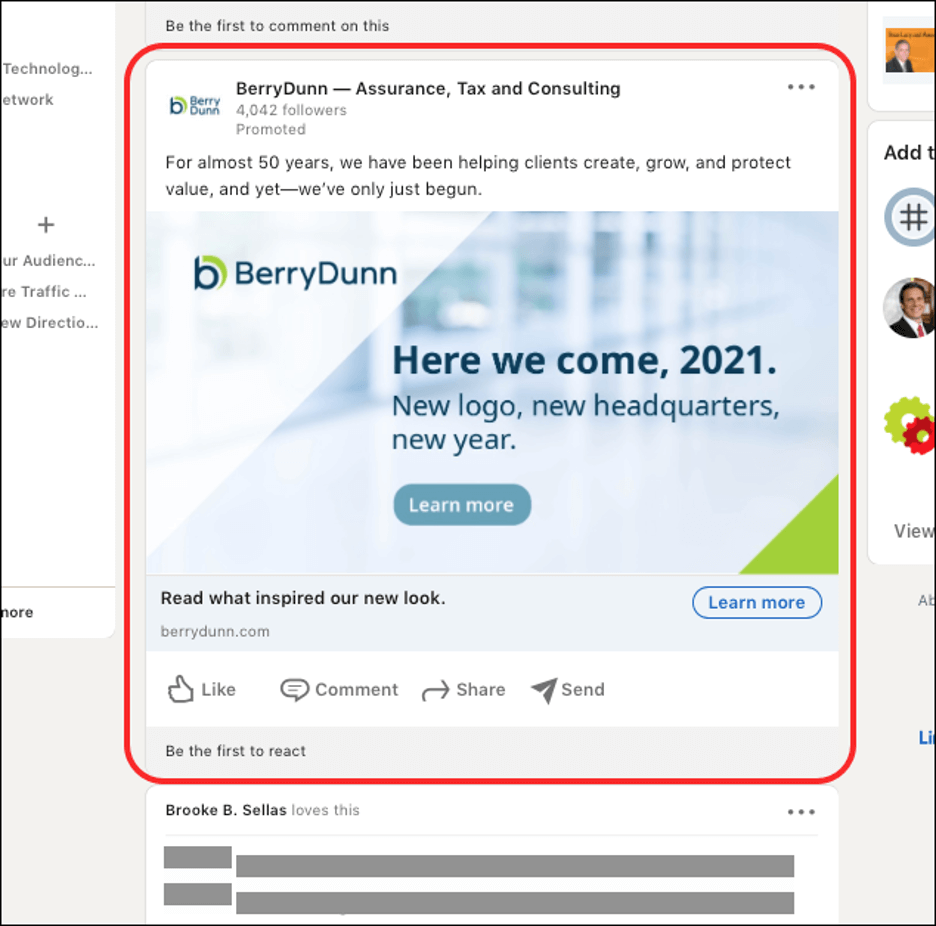
When you want to go after B2B (business to business) customers, LinkedIn has to be part of your strategy.
While LinkedIn Ads tend to cost more per click (what business offering doesn’t cost more than the equivalent consumer offering?), they can be highly targeted and accurate. Because of the original purpose of LinkedIn, people tend to keep their profiles up to date and accurate. This allows you to narrowly target people by job title, experience, industry, and employer.
Who it’s for: Any B2B company looking to get in front of key decision makers at other companies.
How it works: Like other social platforms, you bid to get your message in front of targeted audiences. What makes LinkedIn Ads effective is that its members tend to keep their profiles up-to-date, including company and position.
You can target people based on industry, company, title, position, geography, and more. Your ads can appear in the feed, the right column (on desktop), or you can target people in LinkedIn Messenger. You can also retarget your website audience on LinkedIn if you install the LinkedIn pixel on your site.
How much you should budget: Because ads on LinkedIn run a little higher per click or conversion, you should budget 2.5K – 5K/mo as a starting point.
Further reading:
Pinterest Advertising (Promoted Pins)
Some people consider Pinterest a “discovery” platform rather than a social platform, but however you view it, it’s a great place to put your products and offerings. It’s audience tends to be more affluent, educated, and willing to spend money than other platforms.

Who it’s for: Because a big portion of its audience is looking for inspiration around design, recipes, crafts, and life events, companies that service these needs can do well here.
How it works: Promoted Pins (Pinterest’s ad platform) help you increase your reach and exposure. Pinterest takes time, so plan on running your ads for at least four weeks.
For example, a typical Pinterest user researches their need, finds the inspiration they’re looking for, and then returns to the platform later to make a purchase. You’ll want to have your ad running throughout that buying phase.
How much you should budget: Start small. Learn with how ads work and how to move around the platform. The Pinterest Ad platform reminds us of the Google Ad Platform, it is not always intuitive and takes some getting used to. Fifty percent of people buy products after they see a Promoted Pin. If you are budgeting $30 for 10 days your potential reach is 5.5 million people. In general, small to midsize businesses can expect to pay around 10 cents to $1.50 per click.
Best practices:
- Create visually appealing content – both original and curated.
- Include your brand so it’s immediately recognizable.
- Vertical images perform better as they take up more real estate on Pinterest’s pages.
- Leverage your description, giving users a reason to click through.
Further reading:
YouTube Advertising
YouTube is the second biggest search engine in the world. More people are looking for visual instruction, education, or entertainment. We’ve all fallen victim to not realizing we’re watching an ad because it’s so compelling or exactly what we needed to see.
We’ve talked to many clients who tell us “I don’t have a visual product” or “my customers don’t use YouTube.” Have you ever searched for your industry on YouTube?! You’d be surprised how many videos are out there, and how many thousands or even tens of thousands of views they have garnered.
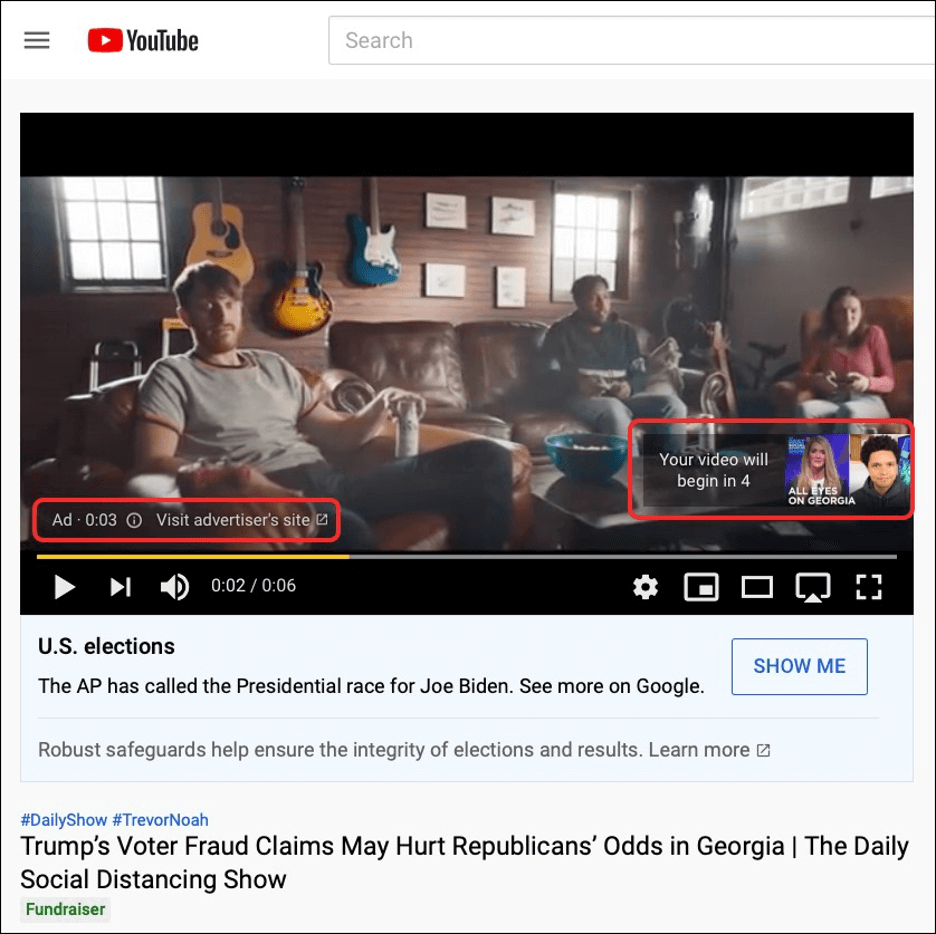
Who it’s for: Anyone who has a product or service that benefits from a demonstration or an explanation. It’s also great for businesses who have exhausted social media advertising and search ads and looking for a new approach to get in front of their audience.
It’s also great for driving traffic to specific videos or channels on YouTube for brand awareness or subscriptions.
How it works: Video ads (formerly in-stream video ads) on YouTube can run before a video (pre-roll), at points within the video (mid-roll), or after the video (post-roll).
In addition, these ads can be skippable or non-skippable. In skippable ads the viewer can skip the ad after five seconds. In non-skippable ads the entire ad runs but maxes out at 15 seconds except in a few countries…oddly.
How much you should budget:
In our experience, we’ve seen clients get pennies for video views; like $0.04 per view. You can start a campaign with just $10 a day and go from there. If you’re serious about building your YouTube presence and want to drive traffic to your website from YouTube, take your Google Ads budget and cut it in half. Give your YouTube Ads a fighting chance.
Best practices:
- Add Closed Captioning – Many people are watching videos without sound. Ensure that even your video ads have closed captioning so users can read your ad if they have no sound playing.
- Create custom thumbnail images – Your video ad previews will appear at the top of search results (similar to Google Ads). A compelling thumbnail can increase your chances for a click.
- Think videos as well as audiences – Beyond targeting audiences by demographics, you can choose which channels, playlists, and videos you want to advertise against.
- Pay attention to video views – If you’re not seeing many conversions from your YouTube Ads, don’t panic. The video views that you get during your campaign stay with your video. Your videos will now look more attractive to the YouTube algorithm due their high view count. In short, your paid views can influence your organic reach.
Further reading:
- YouTube Ads vs. Facebook Ads: Which Works Better for You? – Aleric Heck
- How to Get Started with YouTube Advertising – Jake Larsen
- YouTube Ads [Official]
Twitter Advertising
Twitter doesn’t have the reach of Facebook or Instagram, but its CTR (click through rates) are higher on average than other ad placements. Are the ads worth it?
Twitter ads can work if your target audience is on the site and the goals you want to accomplish are feasible (like increasing followers).
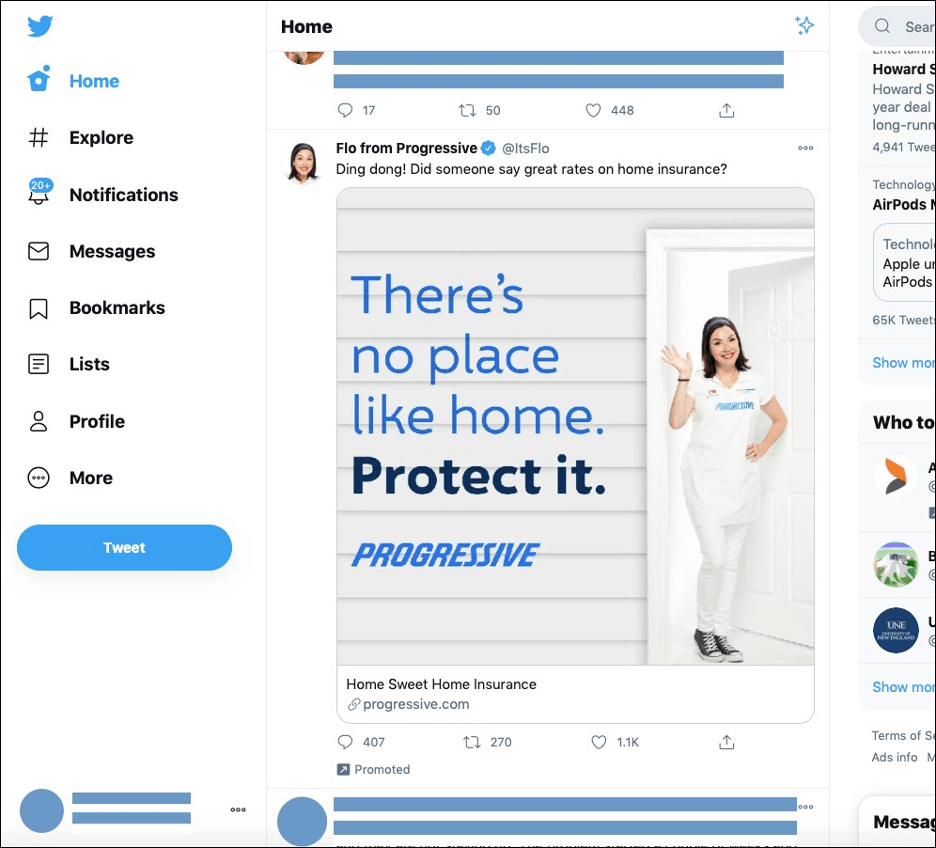
Who it’s for: Twitter advertising should help supplement other forms of digital ads. Certain industries, news, technology and politics take leading roles in Twitter’s content. It’s a smaller audience than Facebook and Instagram but the delivery and targeting is spot on for the right promoter.
Another obvious use for Twitter ads is if you’re looking to build a following on Twitter.
How it works: You can promote both tweets to get more reach and engagement as well as promoting an account to build a bigger following. You can also use Twitter ads to get more video views, app installs, and clicks to your website.
Depending on your objectives, you can pay for exposure or for clicks. You can target people based on who they follow, or whether they’ve engaged with you in the past.
You can also bid on specific keywords or hashtags.
How much you should budget: Looking to promote a trend? $200,000 per day. (Not the right approach for most small businesses.)
Promoted tweets can range from $0.50 to $2.00. There is no minimum spend, but depending on your competition and industry and if Twitter is a good fit for your business (finance, medical, political), Twitter suggests “starting with at least $30/day to consistently reach audiences throughout the day.”
Best practices:
- Twitter may have expanded its original 140 characters to 280, but brevity is still the soul of wit. In other words, be brief. Twitter isn’t the home of long attention spans.
- Consider video. Videos tend to get a lot of engagement and can pack a powerful message in a very short time.
- Include a clear CTA. Make it obvious what the user is supposed to do next.
- Follow what works organically. If a certain type of tweet got engagement without any ad dollars behind it, roll it out again as an ad.
Further reading:
SnapChat Advertising
According to recent stats, 249 million people use SnapChat daily, spending on average over 30 minutes every day.
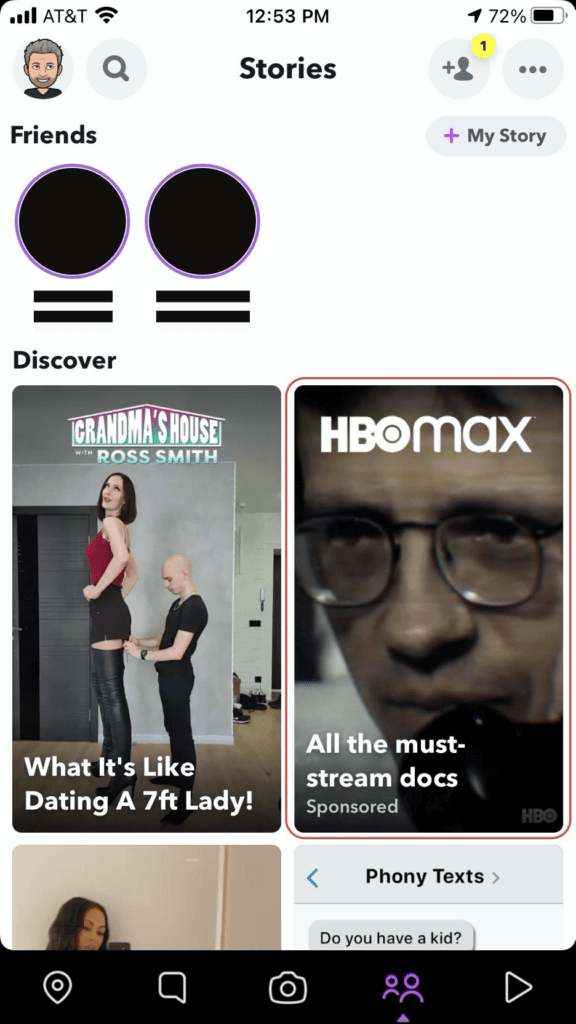
Who it’s for: If your products/services are geared towards a younger audience, SnapChat may be the right place for you! The platform’s largest demographics are Generation Z and Millennials, making them an ideal spot to advertise to youngsters.
How it works: SnapChat provides a variety of ad forms to fit different industry objectives/audiences. Below you’ll see examples of their advertising possibilities:
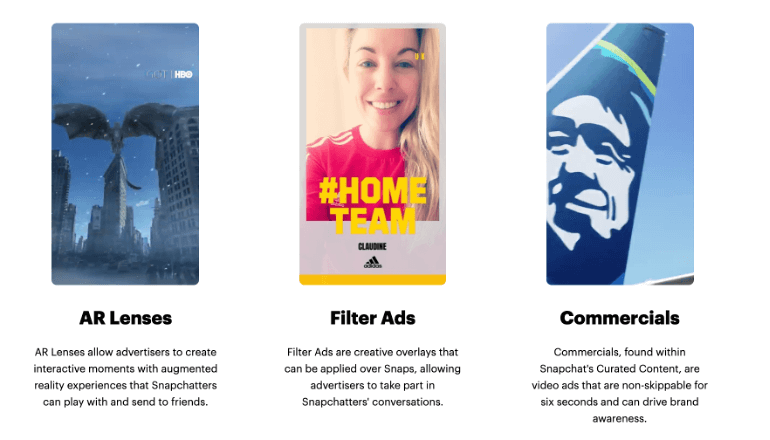
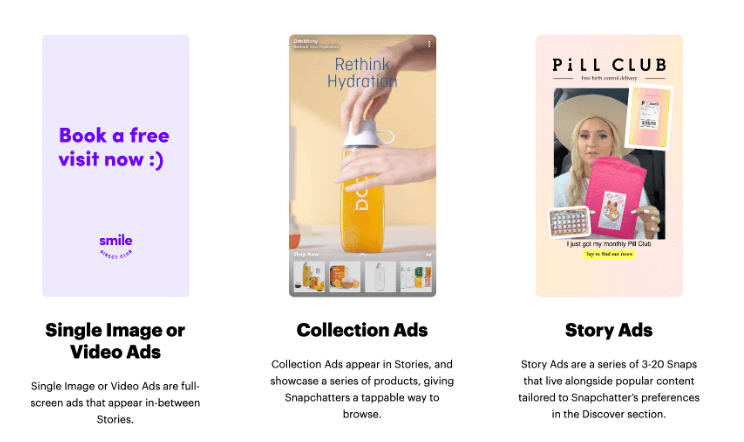
How much you should budget: Snapchat recommends setting “Swipe up” bids between $1–$3, and boast that you can launch your ads with just $5/day. It’s also recommended that if you’re promoting your app, to set the bid at the amount your ad costs to install. However, both of these should be adjusted based on performance. SnapChat charges per 1,000 impressions (CPM), but also allows goal-based bidding as well.
They provide more advanced purchasing options directly from SnapChat, where SnapChat actually purchases the media on your behalf and charges a flat rate for CPM–these rates vary between ad formats. More information about SnapChat’s advertising packages can be found here.
Best practices:
- Turn it up! – While 85% of Facebookers watch videos/ads on mute, SnapChatters watch 60% of ads with the sound on. This means that your ads shouldn’t just look enticing, they should provide audio that sounds enticing as well.
- Don’t be too slick – This may seem counterintuitive, but you want to avoid ads that look too fussy or expensive. Users on SnapChat respond better to ads that appear more “natural” to the platform, which can even include being filmed on a phone rather than using professional equipment.
- Go for the laugh – Try to use humor whenever possible, as Snapchatters more likely to respond to wit.
Further reading:
TikTok Advertising
Don’t Make Ads. Make TikToks. At least, that’s what TikTok’s advertising tells you.
Because TikTok is a relatively new platform for advertising many brands are still experimenting with, there isn’t yet an abundance of data that gives us a clear picture of ROI or average spend.
Who it’s for: TikTok is best for those whose target audience is under the age of 30. Unlike many other platforms, TikTok does not allow just any business to utilize their advertising features; advertisers must contact TikTok directly to see if their business qualifies before running ads.
How it works: TikTok has expanded their ad options to five different types of ads:
- In-Feed Ads
- Top View Lite (formerly “Brand Takeover”)
- Top View
- Brand Effect/Lenses
- Branded Hashtag Challenges
How much you should budget: TikTok’s current budgeting options are “daily” and “lifetime”, both of which can be adjusted at any time. Their monthly budget minimum is $500 at the campaign level, and $50 at the ad group level. However, it has been speculated that ads on this platform have cost brands anywhere from $50,000 to $100,000 to be successful–a “hashtag challenge” alone costs a flat fee of $150,000 for six days.
Best practices:
- Use vertically oriented videos
- Limit video length to 9–15 seconds
- Use attention-grabbing visuals
- Keep important information in the center to avoid being cropped
- Add background music
- Always include captions
- Use a compelling call-to-action
Further reading: [links to appropriate blog posts and AOC podcasts]
- Everything You Need to Know About TikTok Ads
- TikTok’s 6 Ad Types and How Much They Cost
- TikTok Ads [Official]
Advertising on Review Sites
Many businesses see advertising on review sites as a necessary evil. There have been complaints that some platforms seem to punish you when you refuse to advertise there.
Still, if you’re trying to get in front of someone while they’re on their customer journey, it’s hard to avoid some of these popular sites and apps.

Yelp Advertising

Whether we like it or not, Yelp is one of the biggest localized directories that Google looks to for information. Yelp appears near the top of most local searches for restaurants, barbershops, paint stores, and tons of other categories.
If you spy a “Best 10 (category) in (city)” in the search results, chances are it’s a Yelp result. That page may not show ten Yelp advertisers, but if all those searchers are going to end up on Yelp, shouldn’t you be advertising there?
In addition, Yelp is a popular app on mobile devices. Tourists and locals both pull up Yelp to find a local taco stand or (surprisingly) dentist.
Who it’s for: Restaurants, retail, and nightlife businesses are obvious candidates, but Yelp continues to expand the type of reviews it hosts, so most B2C and even some B2B companies should consider it.
If you’re seeing a Yelp “best of list” on the search results for your business vertical, give Yelp advertising a try.
How it works: Very similar to Google Ads, you will be able to have “Sponsored Results” at the top or bottom of your industry’s business category.
You also have the ability to have your business appear as an “You Might Also Consider” on competitor listings.
You can also offer Yelp exclusive coupons for your customers.
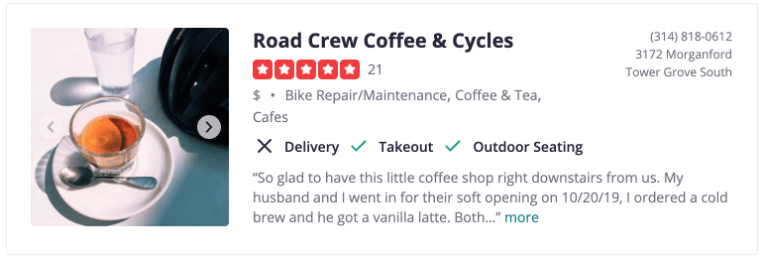
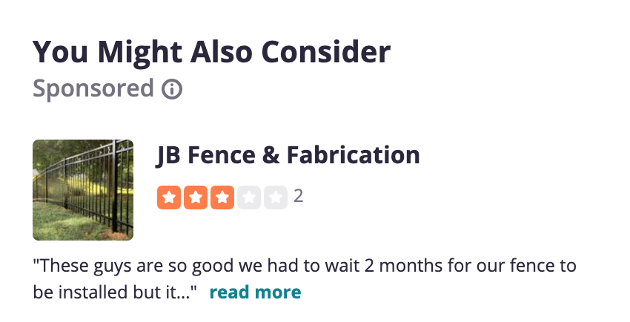
How much you should budget: You have the ability to pay $90 a month for an “Enhanced Profile” which includes more customization to your business page.
- Add CTA’s
- Remove all competitor’s ads from your business page
- Customize the order of your photos and videos
You can also run actual Yelp Ads. Similar to Google Ads, these go by a CPC (cost per click) system. Chances are if your Google Ads are costly then your Yelp ads will be expensive as well.
Best practices:
- Optimize your profile – Users will often click your ad to go to your Yelp profile, so make sure you look your best.
- Stay active – Regularly update your page with new photos, videos, specials, and offers.
- Respond to reviews – Your ads will show your reviews, so you’ll want to respond to Yelp reviews, both complementary and critical.
- Track your ROI – Yelp customer support can spin your metrics into whatever they want. Take control of your spend by truly understanding your ROI.
Further reading:
TripAdvisor Advertising
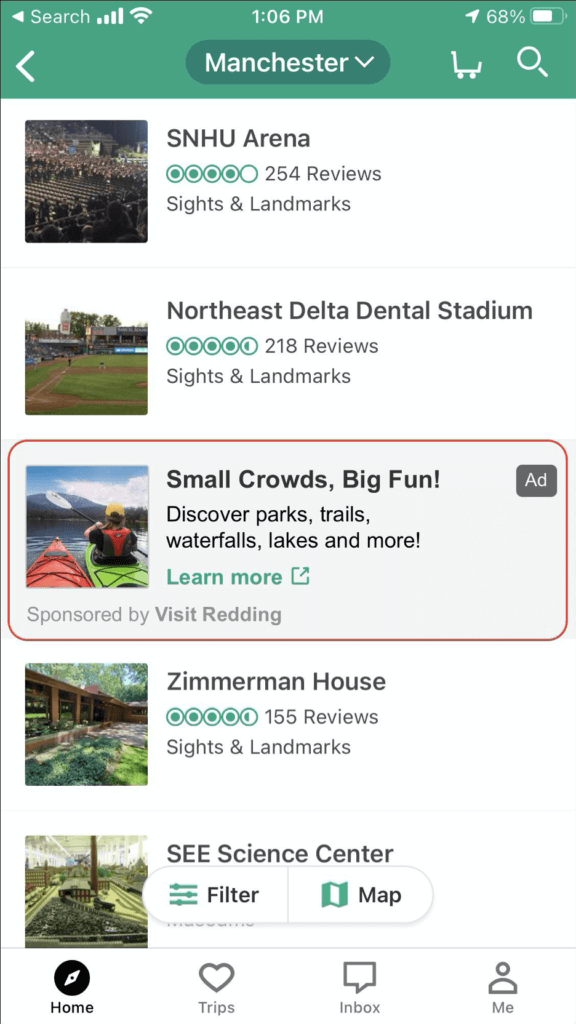
As Yelp is to restaurants and bars, TripAdvisor is to hotels and hospitality. With TripAdvisor now offering direct booking for some of its advertisers, there’s some strong (arm) incentives to advertise on the platform.
Who it’s for: Hotels, museums, tours, and just about any business that requires tourists and travelers can benefit from advertising on TripAdvisor.
How it works: TripAdvisor’s advertising (known as “Sponsored Ads”) is arguably one of the most straightforward of all the platforms.
There are no different “ad types” or nuanced settings to choose from; Sponsored Ads appear exactly as all other non-paid ads, the only difference is that sponsored ads will always be the first listed on the search page. While Google implements certain checks and balances to prevent favoring those with only large budgets, TripAdvisor will put your listing first no matter what your ratings are.
How much you should budget: Unlike many ad platforms, TripAdvisor does not allow their sponsored advertisers to set their own bids. Instead, you are able to choose between three monthly budget options, or set a custom budget.
However, your budget will depend entirely on how competitive your location is; the more competitive, the higher your CPC (cost-per-click) will be. Currently their CPCs are automated, meaning there is no way to optimize your ads/strategy to lower it. So, if you’re advertising somewhere like Las Vegas, prepare to dish out a Vegas-sized buffet budget for results.
Best practices:
Similar to Yelp, you should optimize your profile, keep your listings updated, and respond to any and all reviews.
Further reading:
Advertising on Discussion and Answer Sites
Reddit Ads
Have you ever been to Reddit, the self-proclaimed “front page of the internet?” It’s an online discussion site where over 430 million people congregate in over 130 thousand interest-based groups called subreddits.
Whatever your passion, you’ll find like minded people here, discussing everything from Bob’s Burgers to veganism, board games to video games, travel to homesteading.
Ads appear as sponsored posts–not unlike other social media sites–putting your message right in the middle of the action.
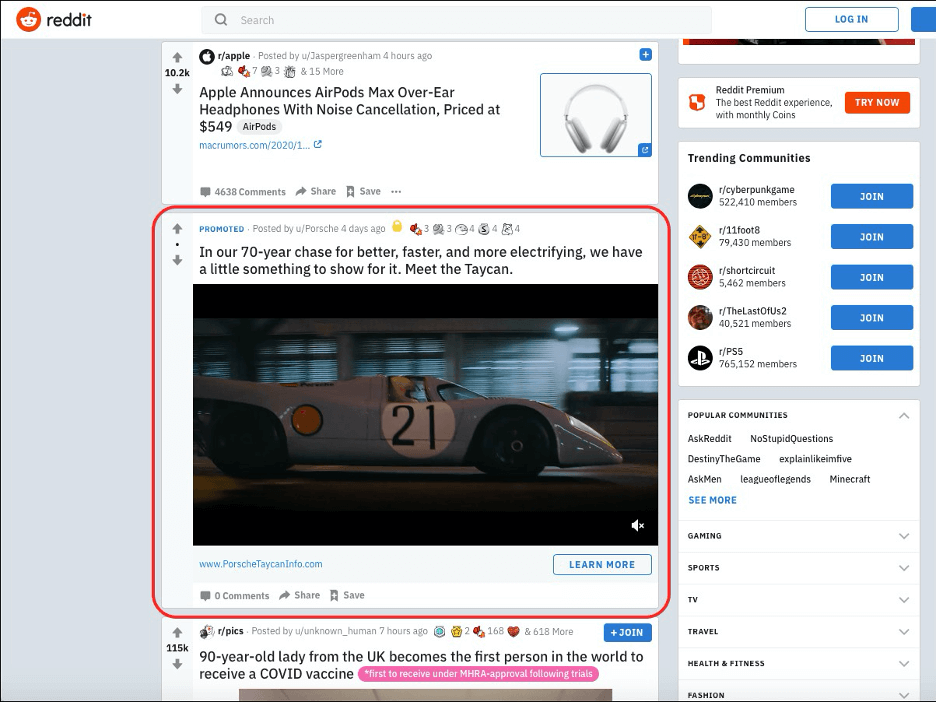
Who it’s for: Any business who’s offering has an alignment with a subreddit can find success here. The Reddit Ads section features success stories from industries such as automotive, consumer goods, retail, and tech.
How it works: Like other social channels, you create an ad, choose your audience, and set your budget.
You can target by user interest, community (subreddits), or let Reddit find lookalike audiences through their “targeting expansion.” You can also filter by device, location, time of day, or even upload your own custom audience.
How much you should budget: Start with a small budget of $50-$100 a week and stay on top of your results.
We’ve seen good vanity metrics (landing page views, clicks, etc.,) but very few actual conversions. It’s what a lot of Reddit marketers see. Many digital marketing professionals see Reddit and Reddit Advertising as an extension of your PR team.
Best practices:
- Be relevant. Reddit users and subreddit communities have their own language and sensibility. To succeed, make sure you’re speaking in the native tongue and using images, videos, and most importantly, memes, that will resonate.
- Become a member first. If you’re active on Reddit, you’ll get better results. Plus, the more time you spend here, the more authentic your creative will become.
-
- Creativity wins. Reddit users hate advertisements which is why Reddit is so new and foreign to many marketers. The biggest hurdle you have to overcome is to make sure your ads look nothing like an ad.
Further reading:
Quora Advertising
Quora is a site where users can ask and answer questions from the community. It offers you the opportunity to build credibility on given topics, as well as directly answer questions from potential customers.
The site is organized around topics, from real estate to outer space.
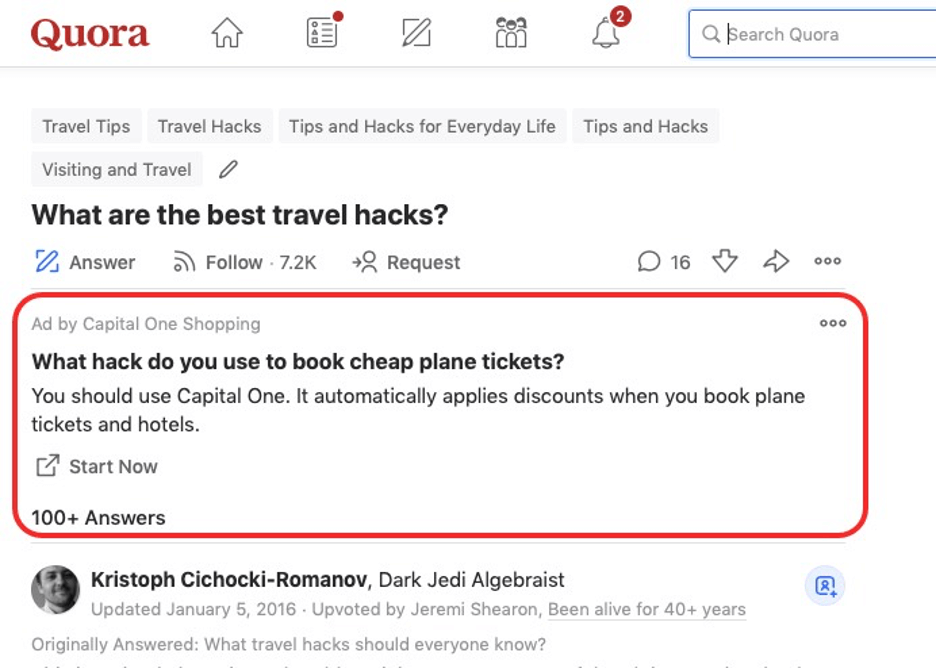
Who it’s for: Any business that is looking to get in front of a prospect when they are in research mode.
How it works: You place your ads based on topics, behavior, or upload a custom audience.
There are four different types of ads: text ads, image ads, promoted answers, and lead gen forms.
Quora is organized around topics. Users can search for companies, competitors, products, and industries. Your ad is served based on the relevancy of the search intent of the user. It is a hybrid of search and social. Just like Facebook, you can upload your email list or remarket from your website.
How much you should budget: Quora is rarely the first stop for online advertising, so chances are you’ll be pulling money out of your current marketing and advertising budget. Whether that’s a small price to pay for experimentation is up to you. Quora has a $5/day minimum for ads, so a month of steady ads will set you back about $150.
Best practices: Best practices for Quora are similar to most other platforms: know your objectives, target appropriately, create appropriate landing pages and measure your results.
Further reading:
Advertising on Industry-Specific Sites
Having recently been on a few popular automotive “research and shopping websites,” looking for a used car for my daughter, it’s hard not to notice the sponsored listings come up at the top of the results, even when they’re not the best match for my searches.
We’ve also done a lot of work in the marine and boat building industry (welcome to Maine!), and we know the love/hate relationship many boat dealers have with similar sites for boats.
If you have a similar site for your industry that attracts people on their customer journey, you may need to explore and experiment placing some of your advertising budget there.
Houzz Advertising (Houzz Pro+)
Houzz is to your home what TripAdvisor is to your travel plans. The site offers ideas for inspiration, products to fill your home, and a directory of professionals who can do the work.
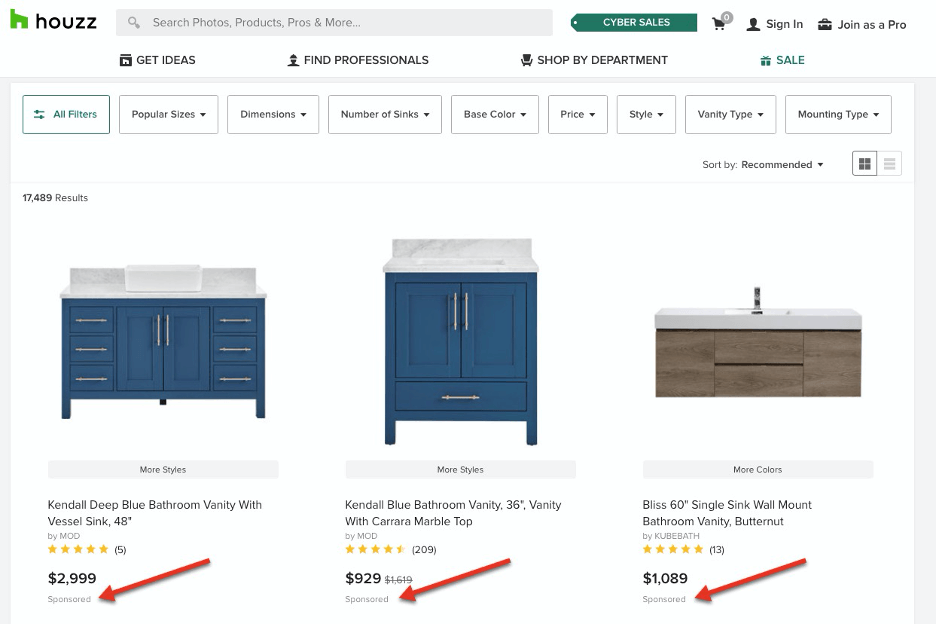
Who it’s for: Many of our clients who service homeowners use Houzz to extend their reach and generate business. This includes:
- Architects
- General contractors
- Home builders
- Interior decorators
- And more.
How it works:
- Native Display Advertising – Make your business listing standout a little bit more by giving it premier placement throughout Houzz’s search results and competitor pages.
- Sponsored Newsletters – Secure valuable space in the twice-weekly Houzz digital Magazine.
- Dedicated Emails – Ideal for product launches, sweepstakes, and other promotions. These are curated emails that are designed by Houzz’s marketing professionals.
How much you should budget: Many businesses set a budget of about $250 – $300/mo, but your budget may depend a lot on your geographic area.
Best practices: There’s strong arguments that optimizing your business on Houzz pays off better than spending money on ads, so you may want to start there. Beyond that:
- Complete profile. A complete profile will help generate organic traffic but will also benefit you when users who click on your paid ads see all the projects that you’ve done and the great reviews.
- Keywords. There is actually a very, very large benefit to optimizing your Houzz profile with SEO. Keyword placement is crucial on all of your images and project descriptions. Make sure to use those same keywords in your ads.
Further reading:
Advertising on Podcasts
Like radio advertising before it, advertising on podcasts allows you to get heard by a specific audience. What’s good about it is that you can narrowly target your message based on a podcast’s topic.
What’s not so good is that unlike most other digital advertising, there’s no clickable link in your ad. Most people are listening through a platform like Apple Podcasts or Spotify, so they have to remember your brand and track you down online.
Using audible calls to action that include a discount code is one way you can track some of the effectiveness of these ads.
Who it’s for: Any business who has a portion of their audience listening to podcasts.
How it works: You can reach out to individual podcasts to get rates, or go through a podcast advertising network like Midroll, PodcastOne, or Knit.
Advertisers get mentioned before the podcast starts (pre-roll), in the middle of the show (mid-roll), or during the outro.
How much you should budget: This is a big “it depends” because rates can vary so much. While some companies may require spends of 10K and up, others have no minimum.
According to AdvertiseCast, rates are:
- $15 for a 10-second ad CPM
- $18 for a 30-second ad CPM
- $25 for a 60-second ad CPM
Best practices: First, whether you go direct to the podcast or use a middleman, you should know the audiences you’re after.
Next, decide if you want “baked-in” ads or dynamic insertion. With baked-in, the ads are often read by the podcasters themselves (think the NPR approach) and are cemented into the show forever.
In dynamic insertion, ads are served dynamically, and when you stop your advertising buy, the ads stop. While this may seem less attractive, many of our offerings don’t have a very long shelf-life and may not be worth keeping around for years and years.
Further reading:
Other Online Advertising and Sponsorship Ideas
This may have felt like an exhaustive list while we were putting it together, but of course there are plenty of additional online places to advertise or to invest your sponsorship dollars.
You can advertise digital in local papers and news sites. While many show ads from 3rd party vendors, most will be more than happy to take your ad dollars for banner ads, skyscraper ads, dynamic ads, text ads, and more.
You can sponsor a website that appeals to your audience. If you own a bike shop, sponsoring a section of the local bicycling non-profit has its benefits.
Talk to your current customers and ask them where they spend their time online. Ask them where they go to ask questions or research topics relevant to your offerings. Likely, many of those sites sell ads, sponsorships, or have other paid options for putting you in front of your ideal customers.
Next Steps
Did you make it all the way down here? Good for you!

Ultimately you’ll need to decide a few key things:
- Where does my audience hang out? I.e., which channels should I consider to place myself on their customer journey?
- What can I afford to spend? This will be driven by both your cash on hand as well as your CLV (Customer Lifetime Value) and your COA (Cost of Acquisition.)
- Should I do this in-house or hire an expert? Are you willing to invest the time and resources in teaching yourself and staying up-to-date on all the ad platforms you need, or does it make more sense to hire an outside firm?
Whether you decide to DIY your digital ads, outsource them completely, or hire an expert to help you get set up and running, be sure to bookmark this article as we continue to add new advertising platforms and sponsorship opportunities.
If you have an ad platform you’d like us to add, leave it in the comments below or contact us today with your suggestion!



